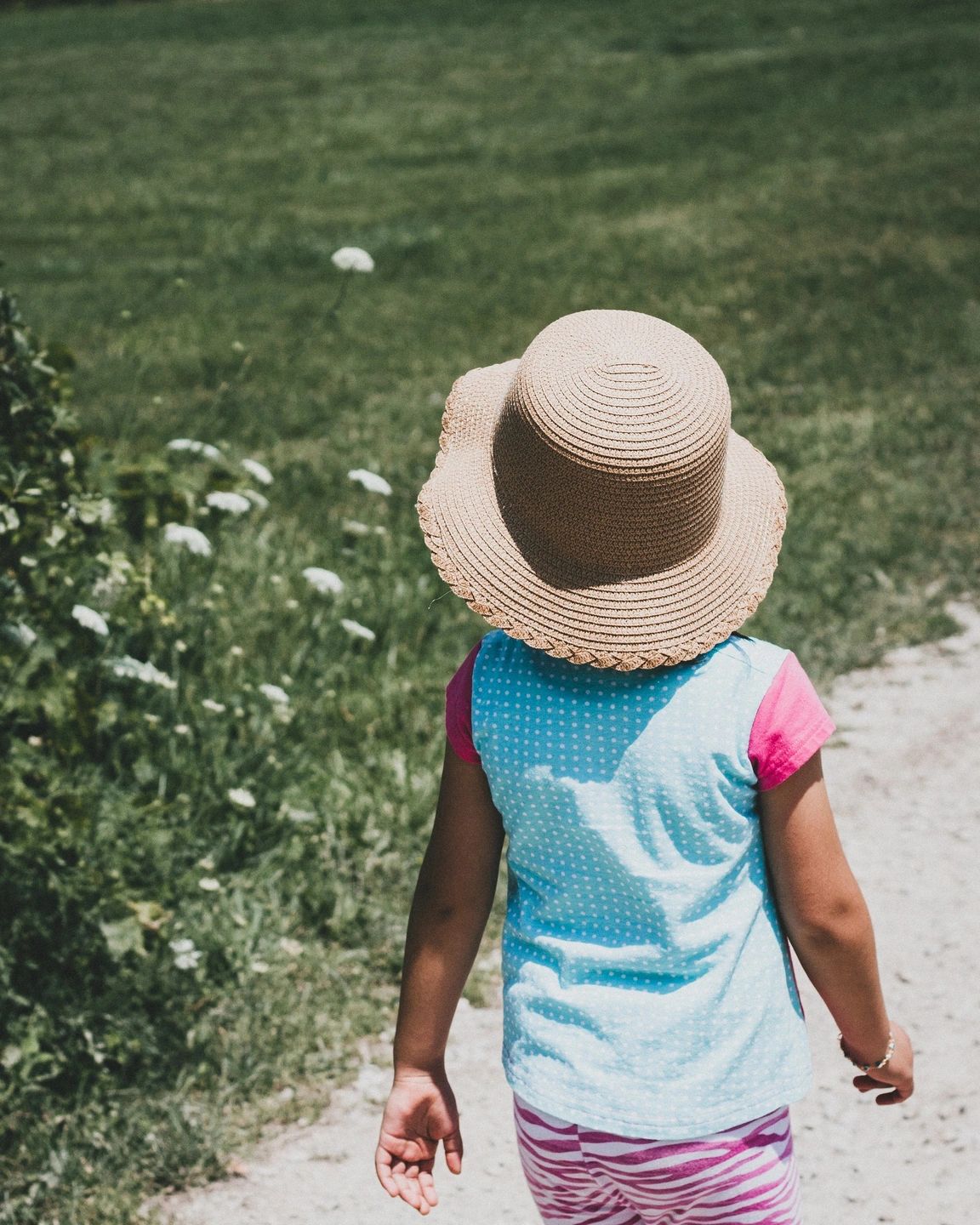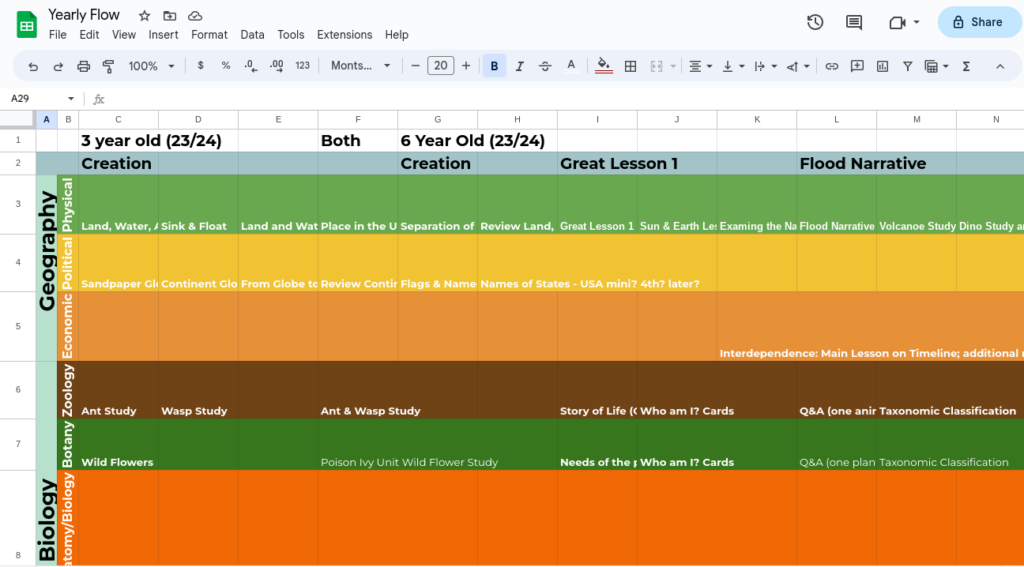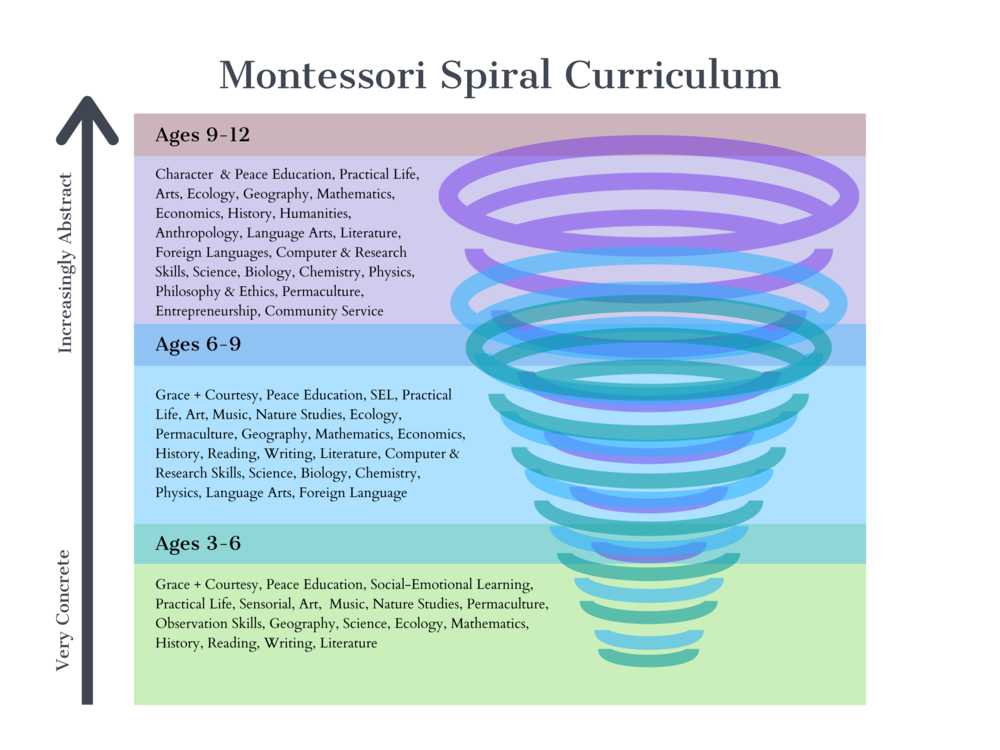Yearly Planning for 3-6 & 6-9

There is a beautiful approach in Montessori referred to as the spiraling curriculum. A spiral curriculum starts with major themes and moves through the progression cyclically coming back to different blocks during a 3 year cycle. It starts with the very concrete exploration of our world at age three and spirals up. There are overlaps between each 3 year cycle and space to take deep dives where there is interest. This infographic from Ranch Montessori explains it much better than I can.
This allows for repeated lessons, explorations and multiple age groups learning together. I have a baby, a 3 year old (who officially started 3-6 in January), and a 6 year old who just started the 6-9 classroom at home. Some lessons will be group lessons. Some topics will be more geared towards 3-6 and some 6-9. One example of this is the Great Lessons. I’ve decided to save the Great Lessons for just my 6 year old to keep them special. I want them to be met with a newness and excitement by each child the first time.
Another consideration for Montessori families like ours is the differences between planes of development. The first plane child starts with themselves and moves outward into the environment whereas the second plan child starts with the big picture and spirals out into areas of interest. Despite these differences there is some overlap. Each may choose to observe the others work or lessons as well. Sensorial exploration and practical life define the first plane (especially under 4). At 4, the sensorial period for math typically kicks in. 5 was a big year for language work for my first.
At 6? Cosmic education takes the place of the cultural curriculum and acts as the spine of the 6-12 Montessori curriculum. This is launched by the five Great Lessons. The first 3 great lessons are launching branches of science and, the fourth great lesson is the starting point for the language curriculum, and the fifth great lesson is to launch the study of numbers. All of the great lessons have a historical component and overlap with other studies. In the second plane the child starts with the big picture and works down to a smaller level. In the first plane, the child starts with themselves and works out from there to explore the world.
I have shifted this year to one spreadsheet/list instead of just doing a list of lessons because I can visually see the overlap. I am still editing this and adding to it, but you are more than welcome to use my format. Here is a link to it. You will need to add a copy to your Google Drive and then you can personalize it. I don’t have the baby on it. Just my 3 year old and 6 year old. We use Info Montessori as our main album for 3-6, and The Timeline by Mainly Montessori as our main album for 6-9 but we also reference and use Montessori Tube Academy, Montessori Laboratory, Waseca Biomes, Math Album (look up), and may add some of Montessori Research and Development’s Albums. I personally put together our Bible, Art, Movement, and Music curriculum right now. Still flushing out some of that but it will come together!
Note: In our home we have a Christian worldview and I will be teaching from that world view and then discussing and teaching the beliefs of others. Because of this, our flow with the Great Lessons, and how we tell it in our home may look different than yours. For example, we are Creationists and we start with the Biblical Creation Narrative. SO we do a focus on this first and then we are telling the first Great Lesson (that I am in the process of owning and personalizing. You, as the guide should get to know it and make it yours!). I *think* I am telling Great Lesson 1 before the Biblical flood narrative.
Here’s a look at our game plan. It will absolutely shift and the pace sometimes changes due to life or interest. For example, my oldest loves math so sometimes she blows through it or changes direction quickly. She is leaning into reading right now and I am here for it! Anyhow, here’s our game plan:

Quick Topical Outline (Summer Term I & II – June 21-August 25)
- Creation (7 Days)
- Finger Knitting
- Music Notes Study
- Land/Air/Water / Water and Land Forms /
- Local Biome Focus (Backyard Biome)
- Poison Ivy/Wild Flowers
- Ants/Wasps (if still interested)
- Local Birds?
- Great Lesson 1
- Space Unit
- Continents (Mini focus on NA + a little look at the states – WV Focus?)
- Flood
- Volcanoes
- Great Lesson 2
- Dinosaurs
- Australia/Oceania
- Coral Reef
- Animal from Australia – Koala?
I am going to come back and add my fall outline here towards the end of Summer II term. There’s a lot above and I’ve honestly found that planning longer than a season outside of writing down a few things to consider isn’t productive for me. Instead, I am going to put a space for ideas below. This is my running list. I won’t delete but add to as I plan seasonally. You can see what we actually dive into in our seasonal reviews!
Ideas:
- Circle back to Native American Unit + Early Explorers close to Thanksgiving?
- Europe after the above?
How do you plan for the year? Do you keep it as a work in progress as well?
